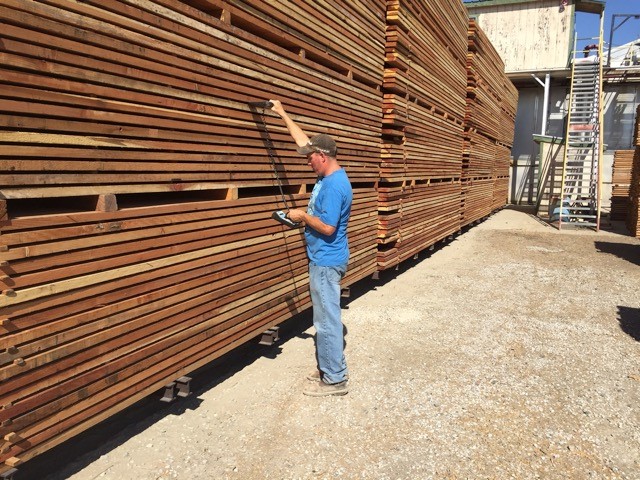This blog was submitted by Southern Forest Products Association associate member Wagner Meters.
The EPA documented in 2018 that 12.2 million tons of wood ended up in landfills that year, which accounted for 8.3% of total landfill materials. With waste becoming an increasing problem, preserving what we have is becoming more important than ever. But moisture management may provide a solution, and one sawmill is already leveraging it.
The sawmill snatches some of that wood away from the jaws of the landfill and turns it into sellable wood. A key part of getting quality output from their process? Careful monitoring and testing of the wood’s moisture content.
How to Transform Undesirable Wood
Knots, knotholes, and large blemishes: all of these features can compromise the strength or appearance of a piece of wood, making it unusable.
This particular sawmill purchases unwanted industrial-grade lumber and turns it into something usable by removing knots and cutting the boards into smaller pieces. Since these smaller pieces typically aren’t sold, they are finger-jointed and glued together lengthwise. They may also be edge-glued.
This lumber, remade and strengthened, is then sold for a variety of uses, including siding and trim, doors, windows, shutters, screen doors, outdoor furniture, and wine cellars. Because many of these products end up outdoors, much of what the sawmill processes are naturally rot-resistant species.
Every year, they process at least 25 million board feet. Lined up, that amount could cross from the east to west coasts of the United States nearly twice.
Moisture Management is Key to the Process
Because the aforementioned sawmill’s team works with wood, one major consideration in quality control is the moisture content of the wood. This means ensuring the lumber is properly kiln-dried to the appropriate moisture content before processing it.
The sawmill’s manager said the edge gluer is attracted to the moisture in the glue, but he doesn’t want it to be attracted to the moisture in the wood. Otherwise, delamination could occur, damaging the end product.
Besides harming the actual wood, too much moisture can harm the equipment.
“Since we use a radio frequency edge gluer to glue our products, it’s absolutely critical that our wood has a low MC [moisture content],” the manager said. “If the average MC for each piece is above 12%, we kick it out. If not, we’ll put our equipment at risk as well as our finished products.”
To control moisture, the sawmill uses handheld moisture meters with stack probes to check the wood while it’s drying in the kiln. They also have an inline meter for their manufacturing process.
“Since we included moisture measurement in our manufacturing process, we became a much better operation,” the manager said. “It significantly diminished a number of issues and has been an important piece of our manufacturing and overall success.”
How are you controlling – and maybe leveraging – moisture in your lumber manufacturing process?
Learn more at WagnerMeters.com.
